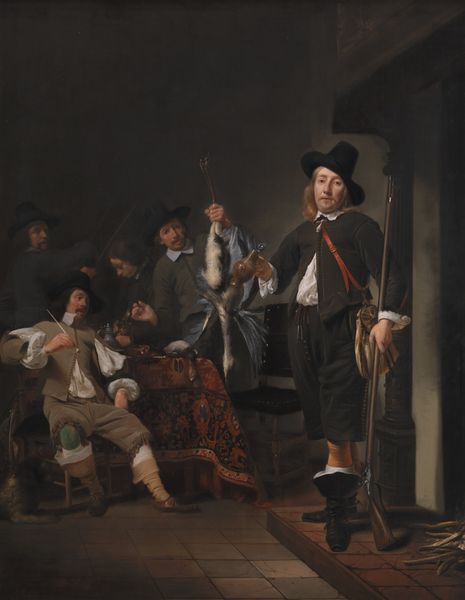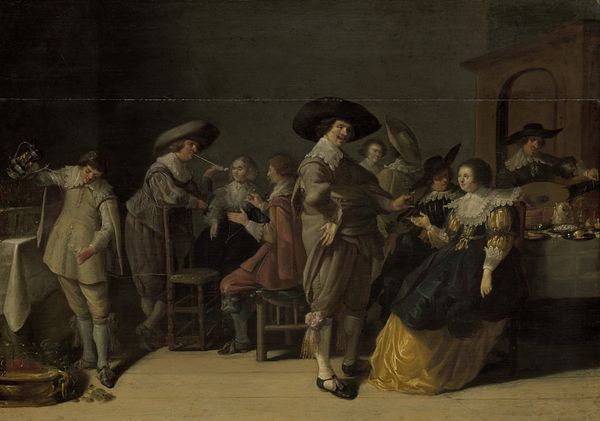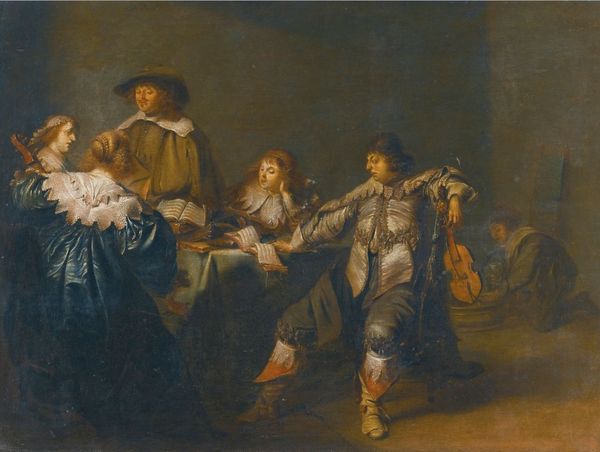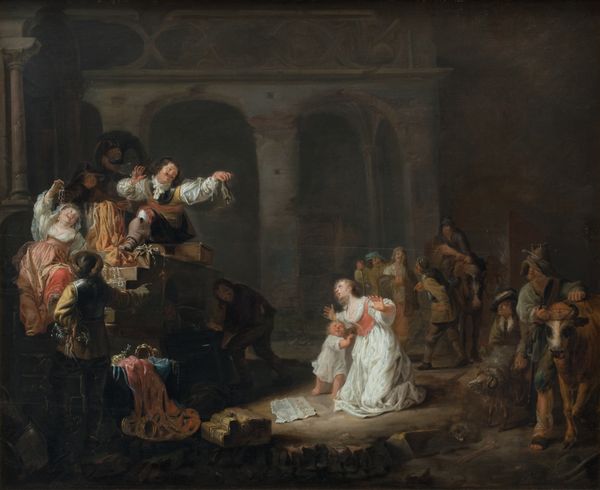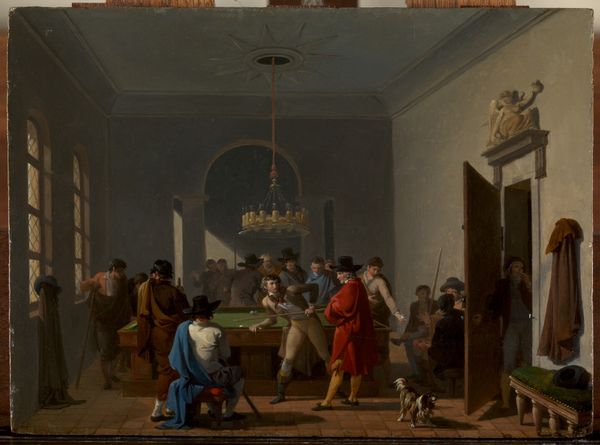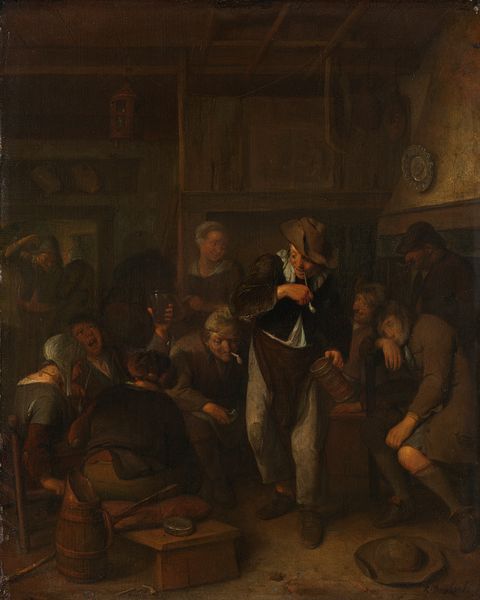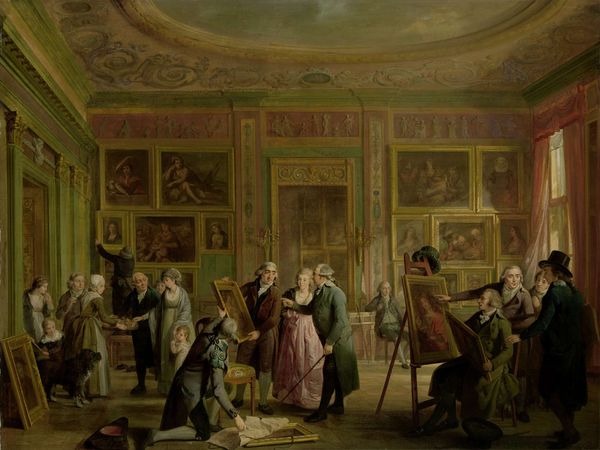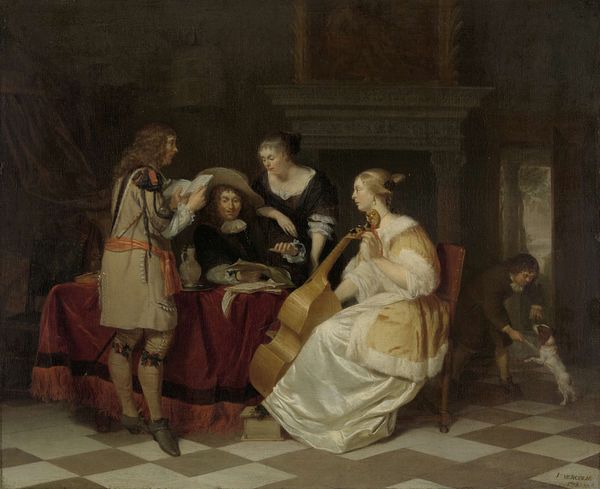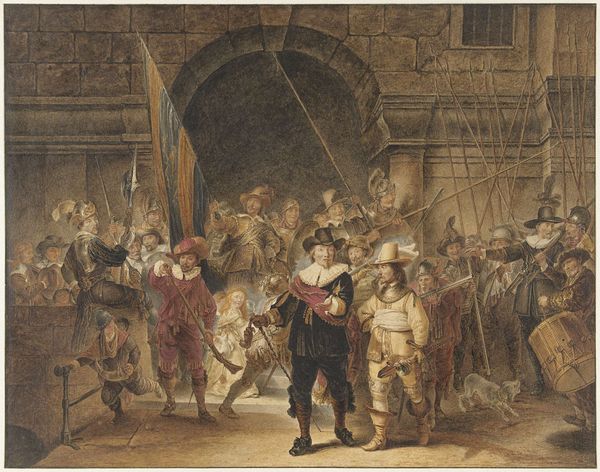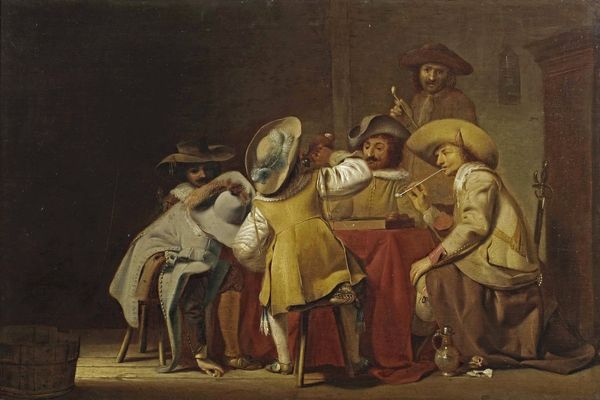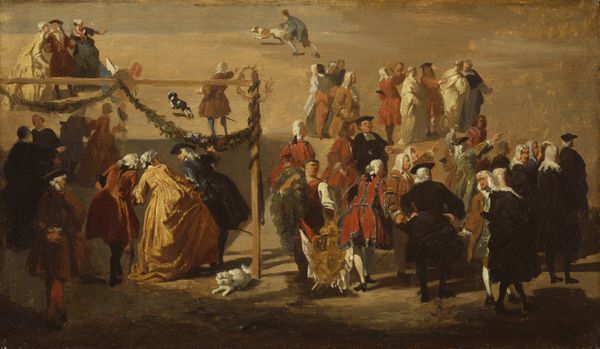
Dimensions: height 49 cm, width 67 cm
Copyright: Rijks Museum: Open Domain
Editor: So, here we have David Bles's "The Patricides, 'Each According to Their Own Nature,'" painted in 1869. It looks like a scene of chaotic merriment—or perhaps a rather pointed parody of one. The scale is large and filled with so many figures; what strikes you when you look at it? Curator: It strikes me how the artist uses the trappings of domesticity to critique the social order. Consider the title, "Each According to Their Own Nature." Bles seems to be suggesting that societal roles, particularly those imposed on women and children, are inherently restrictive and absurd. The performative nature of this domestic chaos hints at a deeper critique of 19th-century bourgeois life and gender dynamics. Editor: Can you elaborate on "performative"? Curator: Absolutely. Look at the woman covering her ears—is that genuine distress, or a staged reaction expected of her? Are the children expressing genuine joy or acting out roles within this elaborate game? Consider how notions of “femininity” are staged versus felt. In what ways does this staged-ness point towards ideas present in feminist theory? Editor: I see what you mean. It’s as if Bles is revealing the artificiality of these family interactions. How does the historical context influence our reading? Curator: In the 19th century, particularly in Western Europe, there was an emphasis on domesticity as a marker of status and morality. But Bles, as part of a shift occurring then, uses genre painting, traditionally celebratory, to expose the constraints inherent in these ideals. It makes us question how power dynamics play out within the family unit and reflect on their wider social implications. The art then starts a critical discussion about labor and its societal role for all the actors represented. Editor: That's a completely different reading than I initially had. I was so focused on the surface-level narrative, I missed the underlying critique. Curator: Art often functions on multiple levels. Exploring the social and historical context is key to unraveling these layers of meaning, and considering gender adds a really helpful, contemporary framework here. Editor: Thanks for sharing; it's made me think about the power of art as a form of social commentary.
Comments
rijksmuseum about 2 years ago
⋮
Just as cats instinctively chase mice, so do these children playing war resemble their father, who is in the armed forces. The Bible on the lectern is more in keeping with his wife and the youngest child, who do not join in the fray. With this painting Bles may have meant to show that a harmonious family can include members with different dispositions, in which some children take after their father, and others their mother.
Join the conversation
Join millions of artists and users on Artera today and experience the ultimate creative platform.
